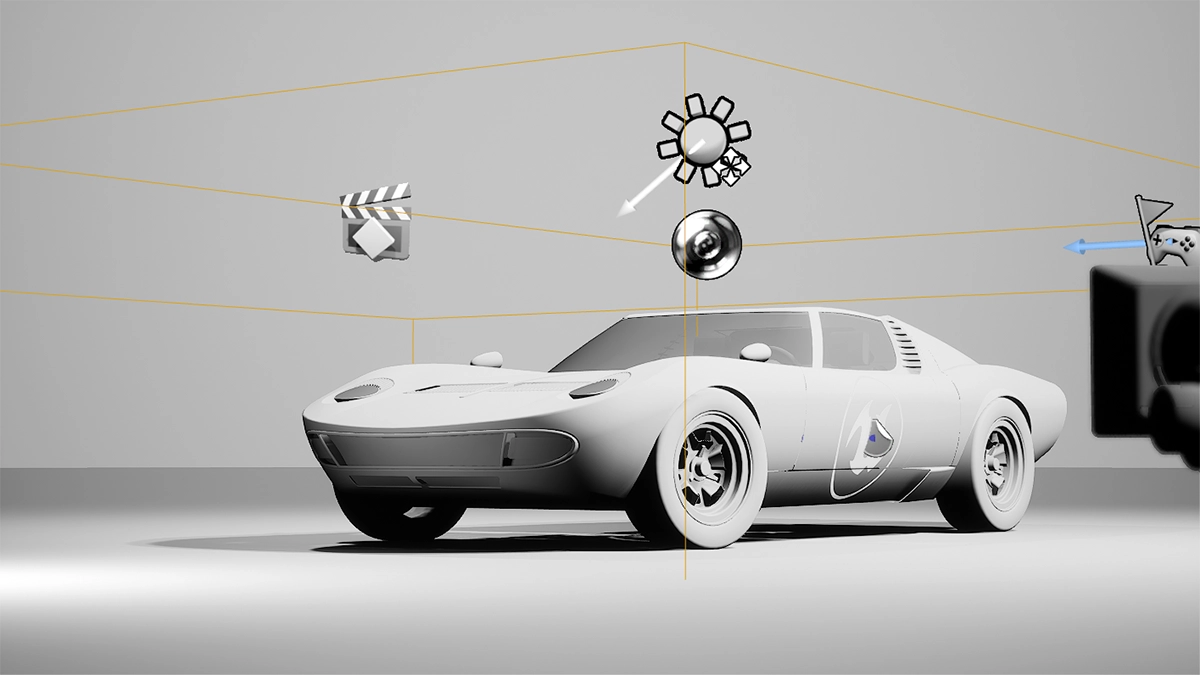Introduction to Game Engines in the Automotive Industry

Introduction
Game engines, long considered the backbone of video games, are rapidly transforming how car manufacturers approach vehicle design, prototyping, and even marketing. Whether it’s the use of advanced simulation for testing or the creation of immersive virtual showrooms, the application of game engines like Unity and Unreal Engine is disrupting traditional automotive practices for the better. In this comprehensive guide, we’ll explore the transformative role these powerful software platforms are playing, their advantages over traditional methods, and what the future holds for this exciting synergy.
What are Game Engines?
Game engines are not just the backbone of video gaming; they’re complex software platforms that offer a host of tools for creating and developing 2D or 3D interactive experiences. Originally designed for video games, these engines include rendering, physics simulation, scripting, and more features. Increasingly, these multifaceted platforms are extending their reach into the automotive industry. Here, they expedite and enrich vehicle design and simulation processes, allowing for high-fidelity virtual testing and creating interactive digital twins of cars before they’re even built.
Game Engines vs Traditional Design Software
In the automotive landscape, the introduction of game engines is revolutionizing how we approach vehicle design, offering a compelling alternative to traditional design software. While traditional design software has long been the industry standard for tasks like CAD modeling and aerodynamic simulations, game engines are emerging as a versatile competitor. The comparison between the two is increasingly relevant, as game engines provide real-time rendering, interactive simulations, and a suite of integrated tools that offer a more dynamic and holistic design experience. Unlike traditional design software, which often requires separate tools for different tasks, game engines offer a unified platform for a myriad of design and simulation functions, facilitating more streamlined and cost-effective processes.
Vehicle Design and Prototyping with Game Engines
In the realm of vehicle design and car prototyping, game engines are proving to be invaluable assets. These platforms are revolutionizing traditional workflows by offering a unified, interactive environment for both design and simulation. Unlike conventional methods that rely on disparate tools for different stages of development, game engines streamline the entire process. They allow designers to create detailed 3D models of vehicles and immediately subject them to various simulations, thereby considerably speeding up the prototyping phase. By leveraging the computational power and real-time rendering capabilities of game engines, automotive companies can achieve more accurate, efficient, and cost-effective design outcomes.
Technological Applications of Game Engines in Automotive
Game engines are revolutionizing not just vehicle design but also multiple technological and marketing applications within the automotive industry. Their simulation capabilities enable exhaustive testing scenarios, from road conditions to crash tests, all within a controlled virtual environment. But the applications go beyond engineering; Virtual Reality (VR in Automotive) is taking automotive marketing to the next level by offering immersive design reviews and customer experiences in virtual showrooms. Augmented Reality (AR in Automotive) aids in everything from maintenance training to providing real-time informational overlays during driving. Even more exciting is the incorporation of Artificial Intelligence (AI in Automotive), which integrates with game engine platforms to propel advancements in autonomous driving and real-time decision-making. Whether it’s creating compelling virtual showrooms for customers or streamlining complex design processes, game engines are playing a multi-faceted role in shaping the future of the automotive industry.
Efficiency and Cost-Effectiveness
The incorporation of game engines into the automotive design process is not only innovative but also highly efficient and cost-effective. The real-time rendering and multifunctional capabilities of game engines drastically reduce the time required for each design iteration, enhancing overall design efficiency. This results in a faster time-to-market, which is crucial in an industry where speed and agility can provide a competitive edge. Moreover, the ability to conduct multiple types of simulations within the same platform eliminates the need for disparate tools, thereby reducing both software and training costs. As a result, game engines are becoming an economically viable solution for automakers looking to optimize their design and manufacturing processes.
Industry Adoption and Challenges
While the adoption of game engines in the automotive sector is steadily growing, the journey has its technical and industry challenges. Industry adoption is contingent on factors like the learning curve for design teams transitioning from traditional software and the initial setup costs. Technical challenges include the need for hardware capable of running these resource-intensive engines and integration with existing enterprise systems. Moreover, the automotive industry has stringent safety and regulatory compliance requirements, which can complicate the implementation of complex new technologies. Despite these challenges, the benefits of game engines are compelling enough to drive continued interest and investment in this area.
Conclusion
In conclusion, game engines are proving to be a groundbreaking force in the automotive industry, radically changing traditional methods and paradigms in vehicle design, prototyping, and even marketing. With real-time rendering capabilities and an integrated suite of tools for both design and simulation, game engines like Unity and Unreal Engine are setting new benchmarks for efficiency and cost-effectiveness. While the industry is still navigating the challenges associated with adopting these advanced platforms, including technical complexities and compliance regulations, the transformative potential of game engines is undeniable. Game engines are poised to drive unprecedented innovation in the automotive landscape as they continue to evolve and integrate further with emerging technologies like VR, AR, and AI. The time is ripe for automakers and industry stakeholders to invest and adapt, leveraging these versatile platforms to gain a competitive edge and redefine what’s possible in the automotive industry.